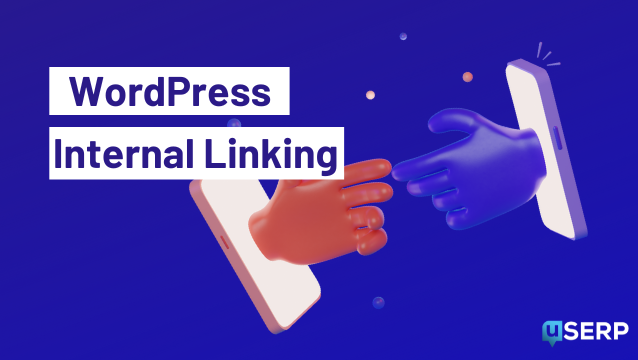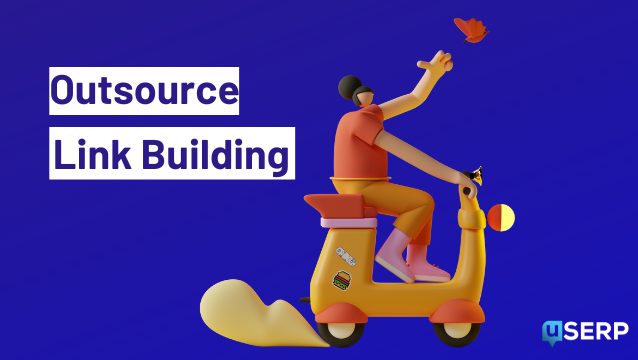In today’s digital age, having a solid online presence is essential for businesses. More and more consumers are turning to the Internet for research. Thus, companies that fail to establish an online presence risk losing potential customers.
Today, search engine optimization (SEO) has become a crucial component of online marketing. It helps businesses with their online reach and visibility.
A key metric of SEO is link-building. In simple terms, link-building refers to acquiring external links from other websites to your site.
These links, also known as backlinks or inbound links, are a vital signal that search engines use. They determine the credibility and authority of a website. The quality of backlinks significantly impacts a website’s position in search engine rankings.
As such, link-building campaigns have become integral to any effective SEO strategy. Tasks like doing a guest post, content promotion, sending link-building outreach emails, and other means of looking for link opportunities are just some of them.
Whether big or small, businesses are now investing in outreach tools such as link-building. In the following sections, you’ll learn tips on choosing the best link-building tool for your business needs. These will help you navigate the crowded landscape of SEO tools.
Understand your link-building goals.
Understanding your link-building for SEO goals is the first and most crucial step. Before building high-quality links, you must know what you want to achieve through this. It means identifying your specific link-building targets, which may include:
Improving search engine rankings
67.5% of SEOs believe backlinks impact search engine rankings. One of the reasons for link-building is to enhance the visibility of your website in search engine results pages (SERPs). Having high-quality backlinks to websites with good domain authority can improve your website. You can use a backlink checker to verify your backlink profile.
On top of that, other ways to improve your search rankings, domain rating, and backlink profile include avoiding broken links, spammy links, or low-quality links, as well as building internal links. These, together with link-building, can make your trust flow high.
Driving referral traffic
Link-building also has the potential to drive referral traffic to your website. When good websites link to your website, more people may visit your site and become customers.
Let’s say you run a small online shop selling handmade jewelry. If a popular fashion blog writes an article about your jewelry and includes a link to your website, their readers may click on it and visit your website to check out your products.
Some readers may like what they see and decide to purchase, becoming new customers for your business. This scenario exemplifies how link-building can drive referral traffic to your website and increase your sales.
Building brand authority
Link-building can also help build your brand authority. It can also establish your business as a reputable source of info. Getting backlinks from authoritative websites can demonstrate your expertise.
For example, you run a business school and get link-building opportunities from credible and high-ranking business pages. A piece of content linked to your page as one of the best online business degrees. With this, you not only get the potential to increase your site visits, but you also build your brand authority and trust flow.
Increasing social media engagement
There are several ways to increase your engagement across any social media platform. Some may include using hashtags with your target keyword, scheduling regular blog posts, etc. On top of those, link-building also helps you get more people to share your content on social media. You can also study the keywords with a high volume of searches per month and integrate them into your link-building activities. In addition to these strategies, leveraging social media analytics tools is paramount for optimizing your engagement efforts. These tools provide invaluable insights into your audience’s behavior, preferences, and the performance of your content. By utilizing analytics platforms like Google Analytics, Facebook Insights, or dedicated third-party solutions, you can track key metrics such as engagement rates, click-through rates, and conversion data. These insights enable you to refine your content strategy and make data-driven decisions, ensuring that you continually adapt to your audience’s evolving needs. For example, a contract management software company could use link-building to increase its social media engagement by publishing blog posts and articles about contract management best practices. The company could then share these posts on social media and encourage its followers to share them as well. By providing valuable content, the company can attract more people to its website and social media pages, which can lead to increased engagement and sales.
Consider the tool’s user-friendliness.
When choosing link-building tools for your business, it’s essential to consider how easy they are to use. A tool should be simple to navigate and have an easy-to-understand interface. You should also be able to use it with very little training.
Here are some reasons user-friendliness is essential when choosing link-building tools:
Saves time
A tool that’s easy to use saves time. You don’t have to spend much time learning how to use it. You can find the features you need and achieve your goals without wasting time.
Reduces errors
It can also help to reduce errors and mistakes. When a tool is easy to navigate, you’re less likely to make mistakes or skip essential link-building steps.
Increases productivity
If a tool is easy to use, it can help you do your work faster. You’ll save time trying to figure out how to use it. This is good for small businesses with little time or resources.
Improves results
It can also achieve better results with your link-building efforts. You can focus on essential tasks when a tool is easy to use. Examples include finding good backlinks or outbound links, writing good emails, and keeping track of your progress.
Consider the price.
Link-building tools have different costs, ranging from free to expensive. If you run a small online business, you may want to consider a free or basic tool to get started. Think about how much money you have and pick a powerful tool with what you need at a price you can pay. Try some tools for free, or try a basic version before you invest in one.
Here are some things to consider when evaluating the price of a link-building tool:
Features and capabilities
Evaluating the tool’s functions helps you determine if it justifies the price. Think about what you want to achieve with link-building and check if the app has what you need.
Do you want to collect email addresses for your outreach campaigns? Do you want to perform broken link building and avoid spammy links? Or are you after keywords that have high monthly searches? Assess your goal and decide from there.
Scalability
Check if the tool can drive growth and if the price increases when you use it more. Some tools are cheaper for small businesses. Meanwhile, some are costlier for bigger companies.
ROI
Find out if the tool will make you more money than you spent. Consider how much time and work the tool will save you. Decide if the tool is better than other ways to get links.
Let’s say you run a small online business selling handmade candles. You’ve invested in a link-building tool that helps you identify websites that might want to link to your site. You use the tool to find a few relevant blogs and websites in your niche and ask the owners if they’d like to link to your site.
Over time, as these websites start linking to your site, you’ll see an increase in traffic and sales. By tracking the traffic and sales sources using an analytics tool, you can determine the return on investment (ROI) of using the link-building tool.
Alternatives
Consider alternative link-building opportunities that may be more cost-effective. For example, you can consider hiring a freelancer. You can also outsource link-building tasks to an agency that can suggest link opportunities to your website. They can be better than buying an expensive tool.
Check for integration with other tools.
If you already use other SEO tools, such as a keyword research tool, etc., consider a link-building tool that integrates with those apps. Integration can save you time and help you achieve your SEO metrics targets.
Find tools that work with other SEO tools like Google Analytics, Google Alerts, SEMrush, or Ahrefs. Choosing tools that work with other platforms is important because it makes things easier.
Increased efficiency
Tools for link-building can work together with other tools you use. This can make your work easier and faster. For example, linking a project management tool or CRM to a link-building tool can help you stay organized. You can also keep all vital information in one place.
One concrete example is using Google Alerts. You can set up Google Alerts for your brand name or website. This way, you can monitor link opportunities when your website or content gets mentioned on other websites. When you find a mention without a link to your site, contact the website owner or author and politely ask them to include a link to your website to provide proper attribution.
Reduced errors
When tools work together, there are fewer mistakes. If you move data between tools yourself, you might make mistakes or miss important things.
Enhanced functionality
Integrating tools can make them work better together. For example, when you mix a link-building tool and a content management system, you can find the best content to get good backlinks.
Better reporting
Integration between tools can also improve reporting and analytics. Link-building tools and analytics platforms can work together to track link-building impact. You can see how your link-building affects website traffic, engagement, and conversions.
Evaluate customer support.
Evaluating the customer support of the tool is another essential factor to consider. Customer support should help users with problems or questions about the tool.
If you have problems using the tool, good customer support can quickly solve them and save you time and frustration. You should check out some aspects to assess a vendor’s customer support.
Responsiveness
You want to choose a tool with a responsive support team that promptly addresses your inquiries. Ask if the tool has a dedicated support team and what communication channels are available, such as client portal, email address, live chat, or phone support.
Expertise
You want a knowledgeable support team about the tool and its functionalities. Check if the team has experience with link-building campaigns and SEO efforts and if they can guide how to use the tool effectively.
Availability
It’s essential to choose a tool with customer support that’s available when needed. Determine if the support team is open during your business hours and if they offer 24/7 support.
Support resources
Good customer support should also provide resources that help users troubleshoot issues independently. Ask directly if the tool has a knowledge base, user forums, or video tutorials that you can access.
Look for customer reviews.
Before choosing a link-building tool, reading customer reviews is always a good idea. Look for tools with positive reviews from users with similar goals to yours. Consider factors like ease of use, data accuracy, and customer support when evaluating customer reviews.
Here are some reasons looking for customer reviews is essential:
Unbiased opinions
Customer reviews offer unbiased opinions from people who have used the tool. It can help you decide if the tool suits your business by showing its strengths and weaknesses.
Real-world feedback
People’s comments can show how well the tool works. It’ll also show how it compares to others. You can learn what the tool can and cannot do. You can also discover if it’ll be helpful for your link-building plan.
Reputation
Checking what customers say can help you know if the vendor has a good reputation. Find reviews from trusted places and notice if people are mostly happy or unhappy. You can check what customers say on these pages, like review sites or social media.
Read good and bad reviews to see the tool’s strong and weak points. Then, you can decide whether the tool is right for your business.
Test the tool before making a purchase.
Finally, before making a final decision, it’s always a good idea to test a link-building tool before committing to a purchase. As mentioned earlier, many tools offer a 7-day free trial, 14-day free trial, and even a 30-day free trial or demo. So take advantage of these offers to try the tool and determine whether it meets your needs.
During your test period, try out the tool’s features, evaluate its user-friendliness, and check the quality of the data it provides. Additionally, when assessing link-builders, thoroughly testing the tool helps ensure that it meets your needs and fits your overall link-building strategy.
Evaluate functionality
Testing the tool can help you evaluate its functionality and ensure it has the functions and capabilities you need, as well as relevant additional features, to achieve your link-building goals. It can also help you identify any limitations or areas where the tool may need revision.
Ensure compatibility
When you are testing a specific tool, you’ll be able to determine and ensure that it is compatible with your existing systems and processes. It can help you avoid potential issues or compatibility conflicts down the line.
Ease of use
Testing is also one of the best and sure ways to evaluate its ease of use and user-friendliness. You can determine whether the tool is easy to learn and use effectively and whether it fits into your existing workflow.
Identify potential issues
Last but not least, when you test a tool, you’ll be able to identify any potential issues that may occur during implementation or use. Knowing these issues and concerns beforehand can assist you in addressing them proactively and ensure a smooth and successful roll-out.
Selecting the best link-building tool for your business needs made easy.
Although many marketers consider link-building the most challenging SEO aspect, it’s crucial to any successful SEO strategy. Using the right tools can help streamline and optimize your link-building efforts.
When choosing the best link-building tools for your business, it’s essential to consider the following factors mentioned above: your link-building goals, the tool’s user-friendliness, price, integration with other tools, customer reviews, customer support, and testing the tool thoroughly.
By considering these factors, you can make an informed decision about which link-building tools will best meet your business’s unique needs and help you achieve your link-building goals.
Remember, link-building is an ongoing process. You must continually evaluate and adjust your strategy as needed. The right link-building tools and continuously refining your approach can build an effective link profile to improve your search engine rankings and drive more traffic to your site.
So evaluate your options carefully, choose the best link-building tools for your business, and refine and optimize your strategy to achieve long-term success.
- How to Choose the Best Link-Building Tool for Your Business Needs - August 7, 2023








